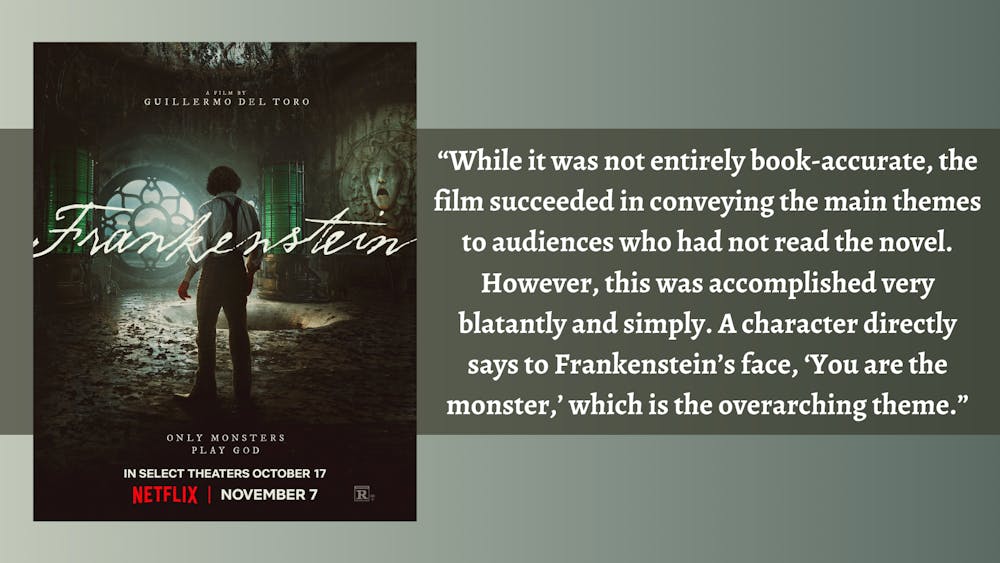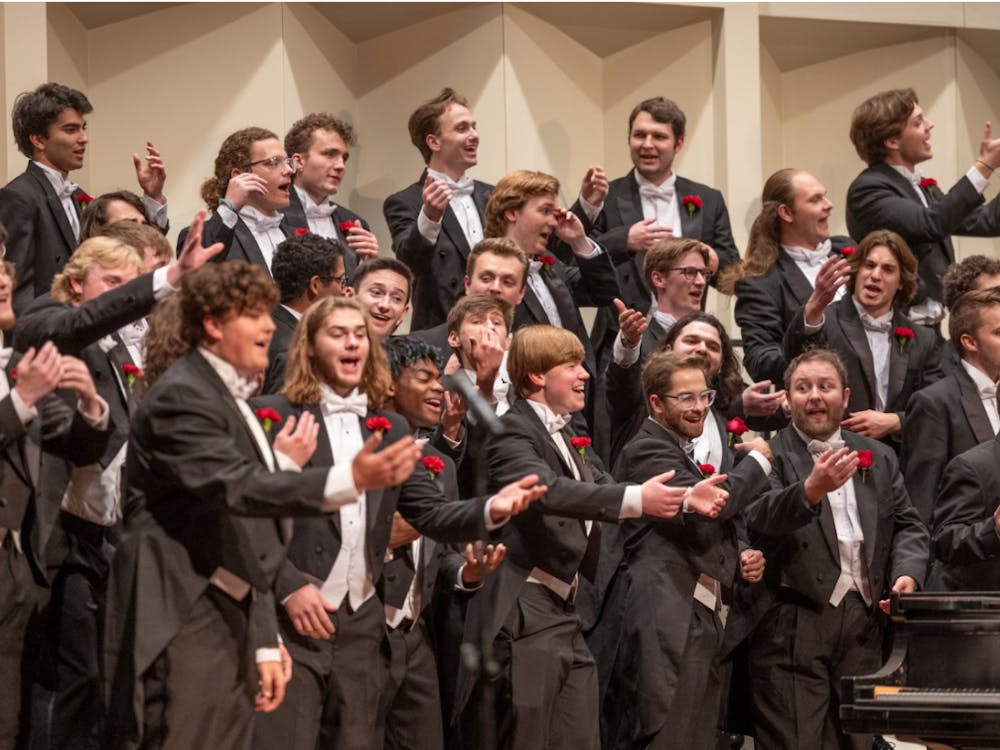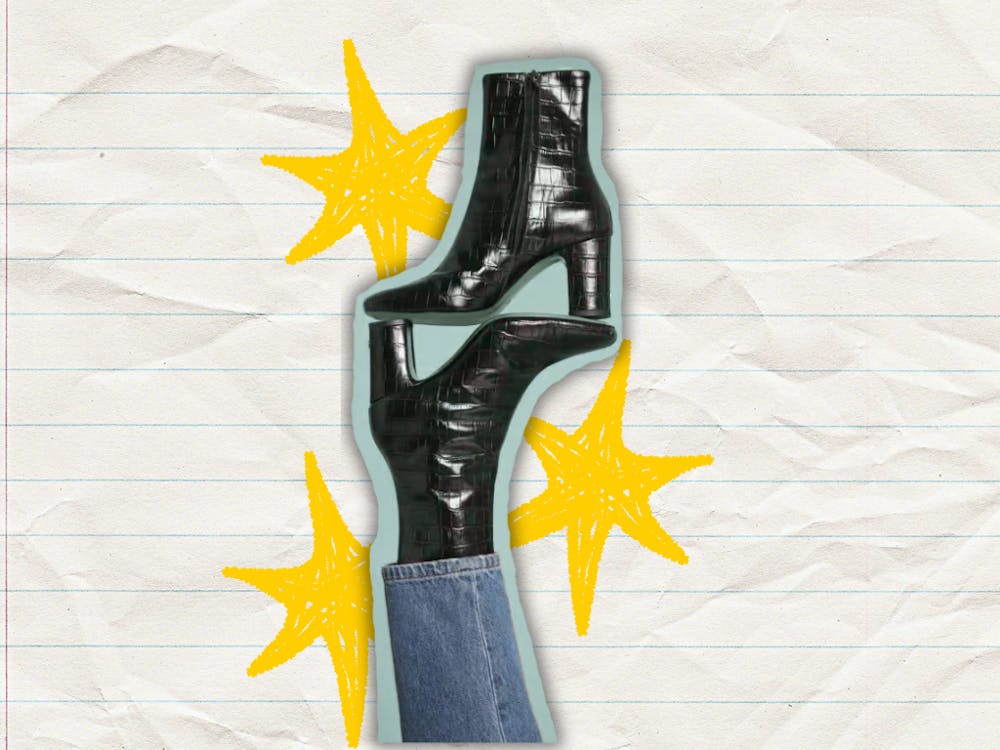The monstrous green stereotype of “Frankenstein” is efficiently disproven in Guillermo del Toro’s 2025 reimagining. However, as beautiful as this movie was, I struggled to see through the glaringly-obvious male lens it was filmed through.
“Frankenstein” has been a misinterpreted story for centuries. Mary Shelley wrote the novel in 1816 and single-handedly created science fiction. Her intricate story revealed themes of religious distrust and the mistreatment of women in her time period. As the story spread throughout the world, it was misinterpreted. Victor Frankenstein, originally the mad creator of a monstrous creature, devolved into a cartoon green man mentioned in the “Monster Mash” by Bobby "Boris" Pickett & The Crypt Kickers.
Toro’s reimagination of “Frankenstein” entered theaters on Oct. 28 and was available on Netflix starting Nov. 7. I had high expectations for this movie because I love the original novel, and the promotion looked promising.
The cast was filled with amazing performers, with Oscar Isaac playing Frankenstein and Mia Goth living up to her name in this gothic adaptation. Jacob Elordi played The Creature, and his performance stole the show for me. It was an unexpected portrayal from him, and it was hard to remember this was the same guy from “The Kissing Booth.”
The film was gorgeously gothic and had an amazing set. Despite being a dark, gothic film, the colors stood out and brought the story to life. It was divided into three parts. While Frankenstein’s point of view was disappointing, The Creature’s part was beautiful and heartbreaking and everything I hoped for.
While it was not entirely book-accurate, the film succeeded in conveying the main themes to audiences who had not read the novel. However, this was accomplished very blatantly and simply. A character directly says to Frankenstein’s face, “You are the monster,” which is the overarching theme. Viewers did not have to search hard for the deeper meaning of this beautiful story.
Toro continuously scratched only the surface of the major themes Shelley originally included in her work. There was adequate religious symbolism, and, again, it was made clear that both The Creature and Frankenstein were monsters.
Yet to me, Frankenstein did not feel guilty enough. He was not disgusted with himself and his capacity to create what he did; instead, he was simply angry at The Creature and others around him.
The biggest downfall for me was the absence of Shelley’s themes of womanhood. She wrote the book in the 19th century, while surrounded by male writers who were undeservingly praised. “Frankenstein” was a story showing the oppression of women and their lesser role in society.
While Elizabeth (Goth) was a strong and well-played character in the movie, I disliked the romance aspect a lot. It took away from her true role and furthered the fact that women are used in movies to advance male plots, which is exactly what Shelley was protesting. To me, the concept of a male director creating a piece of literature written by a woman is a little bit off-putting.
Overall, I think this movie was a great story, but not a great book adaptation. I am thankful there is now a film that rejects “Frankenstein’s” stereotype. However, it fell short of accurately telling the original story.
Rating: 6/10




